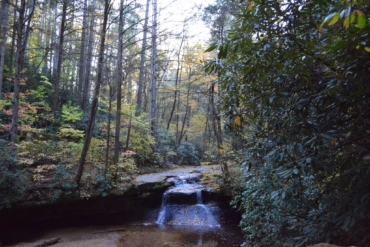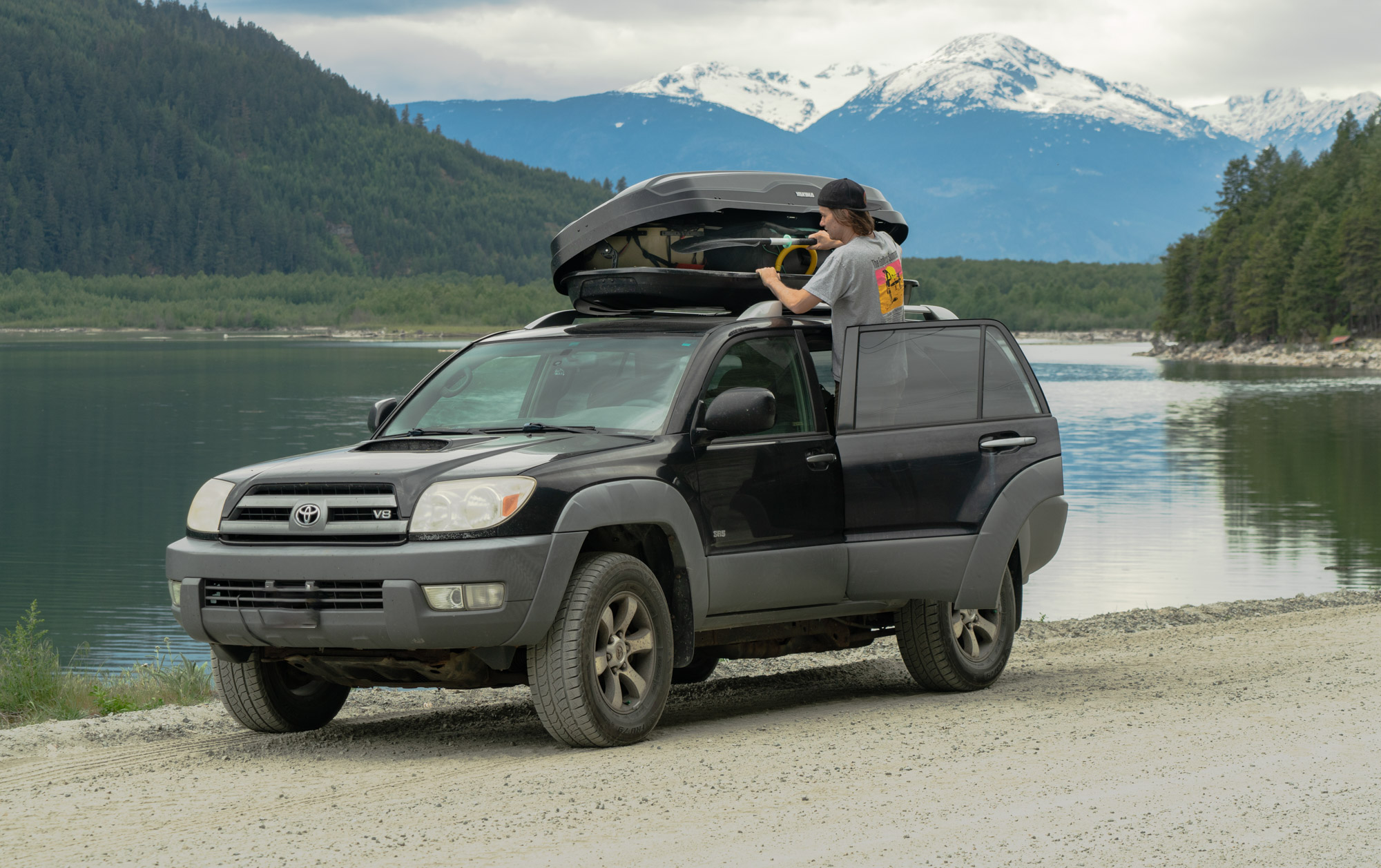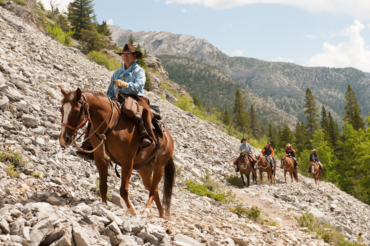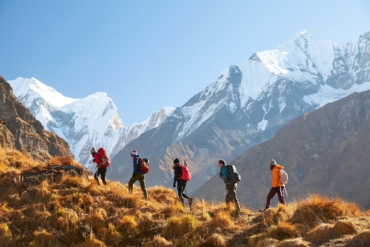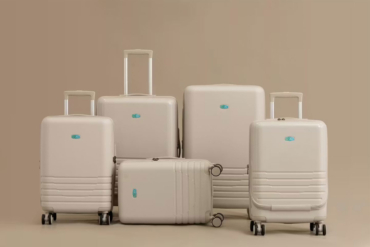As the fall travel season begins in Nepal, radical weather in the Himalayas conspires to thwart the travel plans of thousands of adventure-seekers. What’s a traveler to do?
The minute Hillary and Norgay stood atop Mount Everest, Nepal became the most famous adventure travel destination in the world. Every year, the small nation draws 1.2 million visitors from around the globe.

Despite earthquakes, a nascent government, and other social and political challenges, climate change presents the greatest threat to their most vital economic engine — adventure tourism.
As one of the poorest countries in the world, Nepal’s travel industry provides revenue that residents desperately need to survive. Yearly climbing permits alone rake in $300 million, nearly half of the total income derived from foreign tourists.
Not all who travel to Nepal bring summit-bid ambitions. A quarter of a million people embark on treks throughout the Himalayas while others raft, mountain bike, birdwatch, motorbike, or paraglide.
With wild populations of rhinos, elephants, and tigers, the lowlands draw thousands of visitors to enjoy safaris and dive into the colorful cultures of the ancient country. Nepal truly is an adventurer’s paradise, but all of that is in peril as the global climate shifts.
Travel Plans and a Cranky Climate
This year, the impacts of climate change seem impossible to ignore. As a frequent traveler to Nepal, spending 150-plus days there in the last year, I’ve felt the visceral effects.
I’ve had my skin scorched in unseasonable heat and soaked in record-breaking monsoons. Good friends have been made sick with the spread of disease, and I’ve continually altered or canceled travel plans due to landslides, floods, or other events related to unseasonably severe weather.
When I traveled through the jungled lowlands in May, temps soared 20 degrees F above average. Just south of the border, a portion of northern India suffered several days in a row at 124 degrees F. Again, that’s more than 20 degrees F above normal.
The higher heat index created unusually large storm cells like those to crush eastern Nepal on May 2. Hundreds of international travelers, including me, canceled plans that day to visit areas outside of the capital city. The news reported more than 30 deaths due to tornadoes, a never-before-seen weather phenomenon in that part of Nepal.

In 2010, the Climate Change Risk Atlas ranked Nepal as the fourth-most vulnerable country as it relates to a rapidly shifting climate. Just recently, USAID published a report outlining the impacts of climate change on the country’s biodiversity.
Higher temps, stronger rains, and other variables will eventually harm the 35 types of forests in the country as well the thousands of species of insects, birds, and animals within. These are the very things tourists hope to see.
The United Nations Climate Change Adaptation program evaluated Nepal’s climate crisis, and the prescribed response struck many as uninspired — almost hopeless.
The Adventure Impact
When I spoke with professional climber R.K. Sherpa, his outlook sounded bleak, if just on a recreational level. He said, “In another 10 years, many classic climbing approaches and routes will no longer be viable. Glaciers are retreating, weather windows for summit bids shrinking, and snowfall becoming too unpredictable.”
It was that very issue of narrow weather windows that precipitated the line of climbers on the summit of Mount Everest this year. With only a few days to attain the summit, unpredictable and unseasonable weather patterns created logistical challenges many say claimed lives and will again.
Hot Temps, Standing Water, and Dengue Fever
This week, another bellwether of Nepal’s climate crisis unfolds in real time. And, frankly, it radically disrupts my personal plans. The high heat I experienced in the spring created devastating storms. In turn, these brought floods, landslides, and general disruptions to the country’s travel industry.
Kathmandu suffered a torrent of floods at the onset of summer. That water, still accumulating and pooling, spawned the worst disease epidemic the country has seen in years.

This week, the Minister of Tourism, Aviation, and Culture issued reassurances that travelers would not be impacted by the outbreak of Dengue fever currently found in 56 of the country’s 77 districts. With little power to correct the problem, it’s all he could do.
Experts in epidemiology cite rapid changes to climate as the primary driver of the epidemic. Dengue is spread by mosquitos. Unseasonably warm weather, an increasing problem, allows infected mosquitos to move higher into the Himalayas than ever before — right up to the feet of the world’s tallest summits.
It’s a concern for the 85,000 trekkers headed to Nepal in the coming weeks. Today, more than 8,000 Nepalese fight the effects of Dengue in hospitals and field clinics throughout the country.
What’s a Traveler to Do?
If you’re an authentic adventure traveler, you will roll with the punches, make the necessary adaptations, and go anyway. And maybe now — more than ever — is the time to go.
The shift in climate will undoubtedly alter the Himalayas and how we as travelers interface with Nepal’s cultures and natural environments. Don’t wait around.
In January, I tracked down Nepal’s last forest nomads, the highly elusive Raute tribe. Their rare culture, 900 years old and witnessed by very few outsiders, clings to the brink of extinction. In large part, that’s due to a changing climate. I may have arrived in their camp just in time to see them vanish forever.
It’s a race against immovable forces — and perhaps one we can’t win. But the siren song of adventure and the beautiful scenes of Nepal are hard to resist.
Christophe Noel is a freelance journalist, general vagabond, and the founder of Clean Drink Adventures, an organization providing safe drinking water solutions to remote communities in Nepal. When not rambling about the Himalayas, he and his wife live full-time in an RV parked somewhere on the banks of a Rocky Mountain stream.

